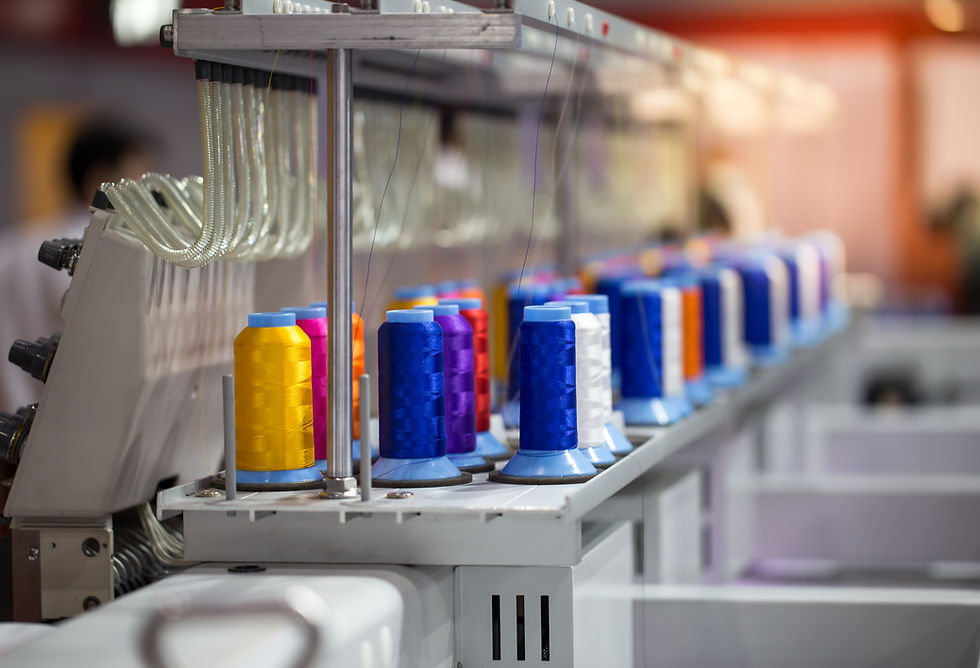The Timeless Art of Embroidery: A Rich History Interwoven with Modern Trends
- baidwanharjeet
- Aug 10, 2024
- 3 min read
Embroidery, the art of embellishing fabric with needle and thread, boasts a captivating history that spans continents and centuries. From ancient civilizations to the modern fashion runways, this intricate craft has continuously evolved, leaving its mark on cultures across the globe.
A Global Tapestry: From Ancient Origins to Worldwide Significance
Early Beginnings: The origins of embroidery can be traced back to ancient China, where silk threads were used to create exquisite designs on clothing and decorative items as far back as 3500 BCE. Evidence of embroidery has also been found in ancient Egypt, Greece, and Rome, highlighting its enduring appeal throughout history.

Embroidery's Significance in India: India holds a special place in the world of embroidery, with its rich and diverse traditions dating back thousands of years. From the intricate Zardozi work to the colorful Phulkari patterns of Punjab, Indian embroidery reflects the country's vibrant cultural heritage. In fact, the Indian embroidery market was valued at USD 2.32 billion in 2021 and is projected to reach USD 4.25 billion by 2027, exhibiting a CAGR of 10.6% during the forecast period.

A Kaleidoscope of Techniques: Types of Embroidery
Embroidery encompasses a wide array of techniques, each with its unique charm:
Cross-stitch: A popular counted-thread technique, known for its simplicity and versatility.
Crewelwork: A surface embroidery technique using wool threads to create intricate designs on linen or cotton.
Needlepoint: A canvas-based technique, creating detailed patterns with yarn.
Ribbon Embroidery: Using silk or satin ribbons to create dimensional floral designs.
Machine Embroidery: Utilizing computerized machines to create intricate patterns quickly and efficiently. According to a report by Grand View Research, the global machine embroidery market size was valued at USD 3.4 billion in 2021 and is expected to expand at a compound annual growth rate (CAGR) of 6.7% from 2022 to 2030.

Modern Embroidery: Technology Meets Tradition
Advancements in technology have revolutionized the world of embroidery.
Computerized Embroidery Machines: Today, state-of-the-art machines enable the creation of complex and detailed designs with precision and speed. Popular brands include Brother, Janome, and Bernina, catering to both home embroiderers and professionals.
Embroidery Digitizing Software: This software allows you to convert artwork and designs into embroidery files that can be read by machines.
Threads and Designs: The Building Blocks of Embroidery
Types of Threads: The choice of thread significantly impacts the final look of the embroidery. Popular choices include cotton, silk, metallic threads, and rayon. The global embroidery thread market is expected to reach USD 5.23 billion by 2028, according to a new report by Emergen Research.
Embroidery Designs: From traditional motifs to contemporary artwork, the possibilities for embroidery designs are limitless. Design software, such as Embrilliance and Wilcom, provides tools to create and customize patterns.

Embroidered Clothing: A Global Resurgence
Embroidered clothing has experienced a remarkable resurgence in recent years, captivating fashion enthusiasts worldwide. Its unique ability to blend tradition with contemporary style has made it a sought-after trend on runways and streets alike. The global market for embroidered apparel was estimated at USD 42.61 billion in 2022 and is projected to grow at a CAGR of 6.2% to reach USD 68.32 billion by 2028.
Sustainability: Embroidered Clothing vs. Printed Clothing
In an era of growing environmental awareness, embroidery stands out as a more sustainable choice compared to printed clothing.
Longevity: Embroidered designs tend to be more durable and long-lasting than prints, reducing the need for frequent replacements.
Reduced Chemical Usage: Embroidery generally involves fewer chemicals compared to printing processes, lessening its environmental impact. A study published in the Journal of Cleaner Production found that textile printing can consume up to 2,700 liters of water per kilogram of fabric, while embroidery has a significantly lower water footprint.

Hugs & Hues: Your Destination for Custom Embroidered Clothing
At Hugs & Hues, we celebrate the art of embroidery by offering a wide range of custom embroidered clothing. From personalized apparel (like t shirts, skirts and hair clips) to unique gifts (cushion covers), we bring your ideas to life with precision and creativity.
Conclusion
Embroidery's enduring appeal lies in its ability to transcend time and trends. It's a testament to human creativity and the timeless beauty of handcrafted artistry. Whether you're drawn to traditional techniques or fascinated by modern innovations, the world of embroidery offers endless possibilities for self-expression and style.









Comments